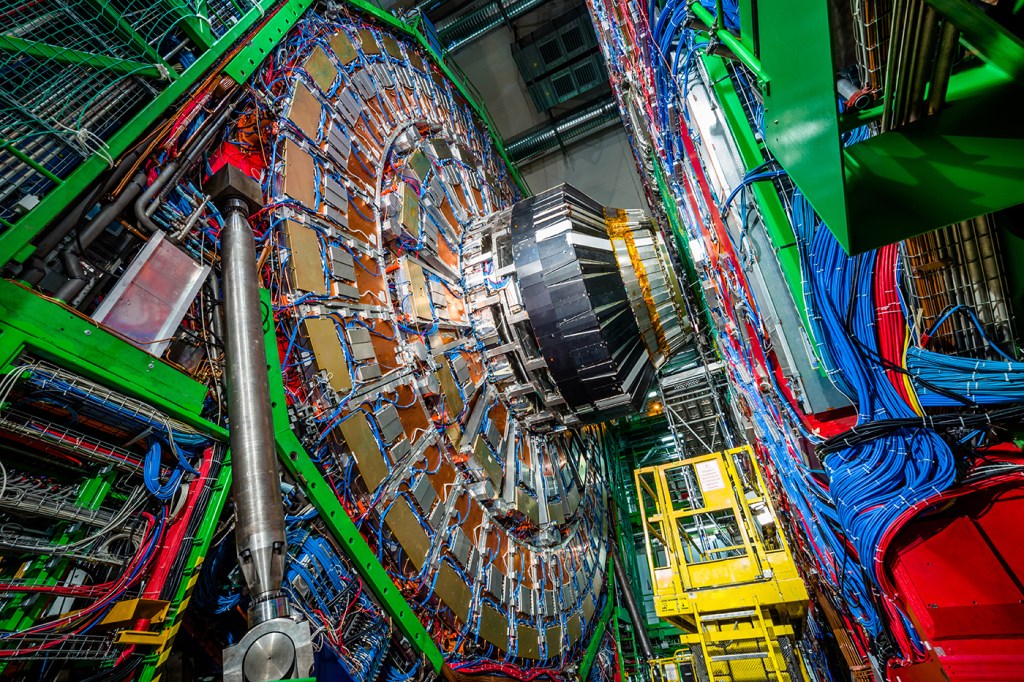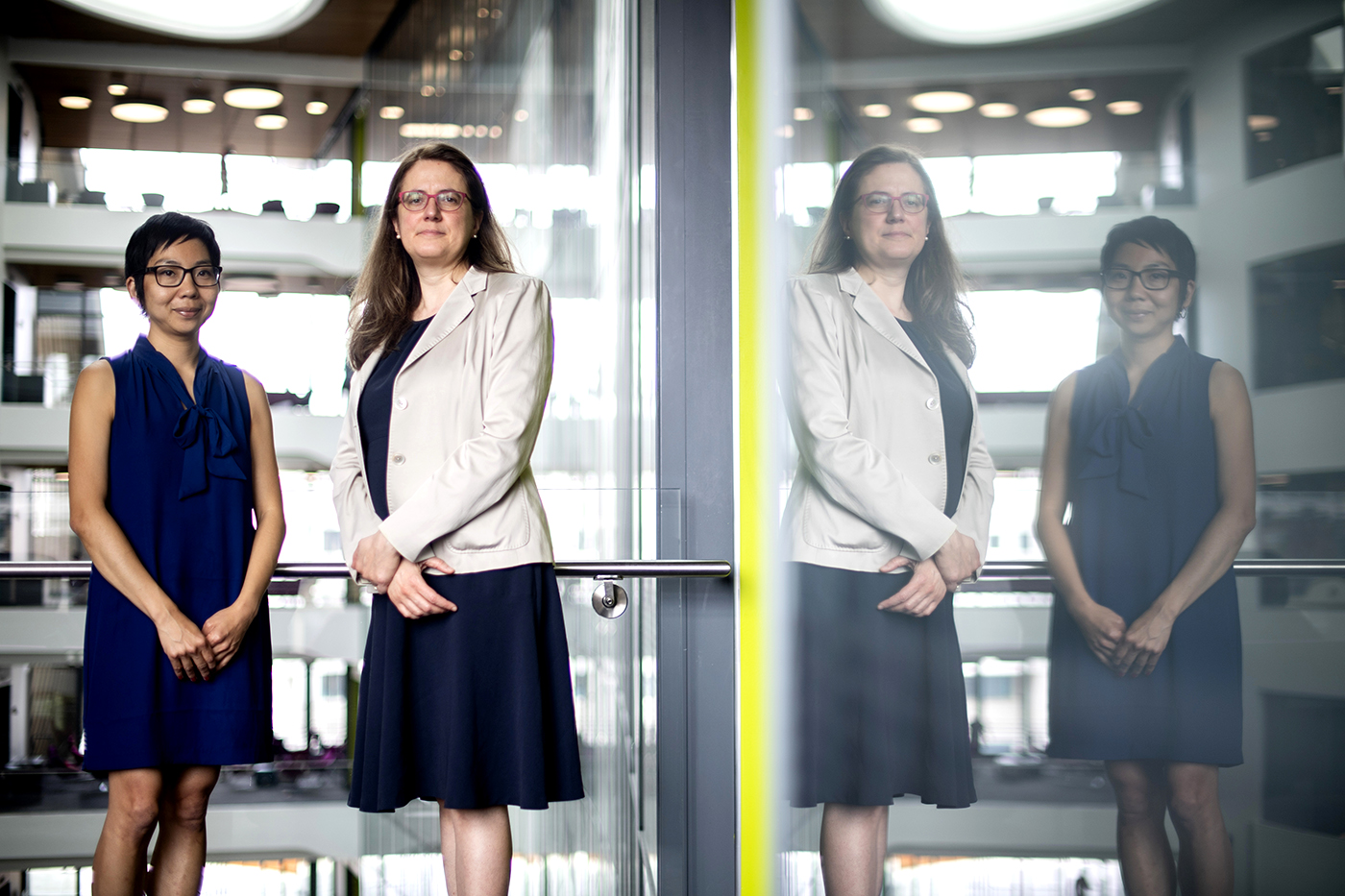During CERN shutdown, Northeastern University physics professors work with global scientists to understand dark matter and other phenomena beyond the Standard Model

We may not know the meaning of life, but we’re getting closer to figuring out what it’s made of. The answer to our huge questions starts small: particle physics.
Pull back layer after layer, channel a lot of energy into the search, and take care to leave things as they were in the past; with that, answers begin to reveal themselves, like wriggling bugs beneath a long-forgotten rock. And a lucky seven years after discovering another metaphorical bug, Northeastern physics professors Emanuela Barberis and Toyoko Orimoto are gearing up to convene the people who are searching for more.
Since the mid-twentieth century, particle physics experiments have fleshed out the Standard Model, which outlines the components of matter—particles like protons and electrons—and how these pieces interact with one another—like photons conferring the electromagnetic force, which holds together atoms.
The Standard Model is, as Barberis says, “the Lego block set of our universe.” And, freshly discovered in 2012, a particle called the Higgs boson completes this set.

Inside CERN, a research organization that runs the biggest particle physics lab on earth, a massive machine called the Large Hadron Collider had been hurling particles at one another, letting them smash together, and measuring such things as their momentum and energy levels.
Over the years, these extreme conditions produced observable results, like the electrical charge of certain particles, which physicists could then plug into the Standard Model. By doing this, physicists began to learn about the ingredients of our universe, even ones that only existed for an instant, long before we were there to observe them.
“We recreate conditions that are very close to the Big Bang,” Barberis says. “We produce particles that are not abundant in nature nowadays.”
But Barberis, Orimoto, and their fellow physicists—including Northeastern’s George Alverson, Darien Wood, and Louise Skinnari, all of whom now work on the Compact Muon Solenoid experiment at CERN—keep pushing on, since there are only more questions to answer.
For example, the Standard Model doesn’t account for gravity, an observable force but one that’s hard to describe at a smaller-than-an-atom level. And then there’s dark matter and dark energy, which are a big part of the universe, says Orimoto.
“The Standard Model only describes a small fraction of the universe we know,” she says.
To tap into these still-unexplained phenomena, particle physicists need new strategies, new ideas, and new plans. And, of course, a machine that collides a billion particles every second—at nearly the speed of light—needs a break. For this reason, in November 2018, the Large Hadron Collider was shut down for a breather.
“We are upgrading the experimental apparatus because this experiment is running for…” begins Barberis.
“Decades,” finishes Orimoto.
“To 2035, at least,” Barberis says. “So every now and then we upgrade.”
Scientists welcome these shutdowns, too, since constant, large-scale tests generate lots of data that then needs to be analyzed and discussed. Every two years, they come together at a conference: the Meeting of the Division of Particles & Fields of the American Physical Society. This year, Barberis and Orimoto are your co-hosts. And Northeastern is your home base.
Attendees will hail from not only American labs and research universities but the Chinese Academy of Sciences, Justus Liebig University Giessen, and Universidad Nacional de Colombia. The five days of talks and discussions, punctuated with plenty of coffee breaks, will also tackle challenges like diversity in physics and scientists’ efforts to communicate their findings to the public.
There will also be a lecture open to the public, a cornerstone of each conference. This year’s lecture, delivered by Dr. Katie Mack, will address dark matter (even though such a topic can’t be anywhere near sufficiently covered).
Like a field welcoming a new seed after a season of growing a familiar one, or your skin drinking up a face mask after a week of constant cosmetics, sometimes world-class physics instruments need a break from figuring out what the universe is made of. And, in a way, this is when the real work begins.
“We have some breathing time,” says Orimoto, “but it doesn’t mean we’re taking a break.”
For media inquiries, please contact media@northeastern.edu.





